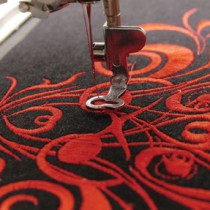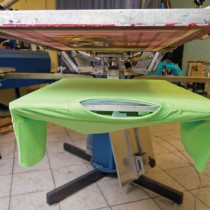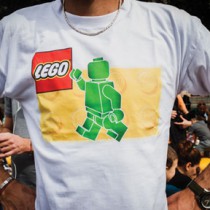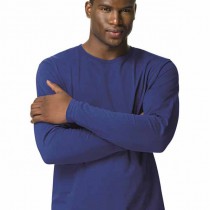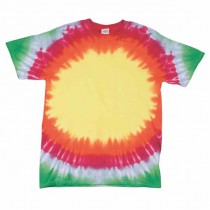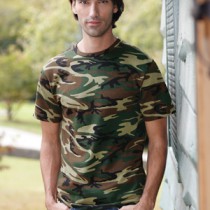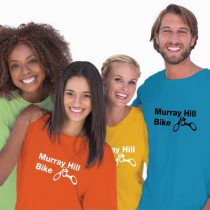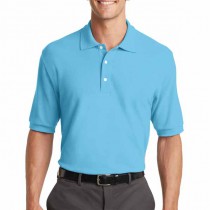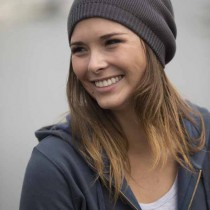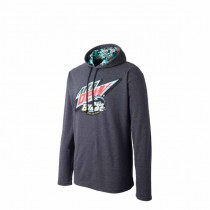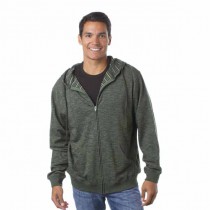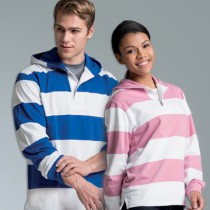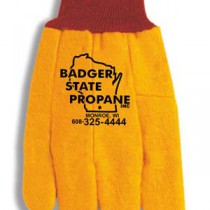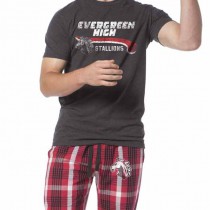Go Ahead And Sweat
Studies show cotton passes the smell test
Cotton is not only America’s top cash crop (stimulating $120 billion in annual U.S. retail revenue), it’s also the most popular fabric in the world. With its comfort, wearability, durability and versatility, cotton is always a great choice for promotional apparel. But did you know that cotton also outperforms its synthetic counterparts in both resisting odor-causing bacteria and coming out cleaner in the wash?
The Stink Studies
A 2014 study by Chris Callewaert and a team of researchers from the University of Ghent in Belgium revealed that bacteria didn’t grow as much on cotton as it did on polyester. The study, published by the American Society for Microbiology, involved collecting t-shirts from 26 people after they completed an hour-long spin session. Researchers incubated the shirts for a day, and then extracted and identified the microbes. A trained odor panel found that micrococcus, the bacteria that causes unpleasant body odor, was more prevalent on the armpits of polyester shirts than it was on cotton t-shirts.
Another study in 2013 revealed that when washed, cotton emerged cleaner and fresher smelling than polyester. University of Alberta Professor Rachel McQueen and a team of researchers had 18 students and staff hit the gym 20 times in either cotton or polyester t-shirts and then wash the shirts. After 10 weeks, trained sniffers cut out samples from the shirts’ armpits and concluded that cotton fabric retained less odor compared to polyester.
The 2014 study notes that because synthetic fibers gather moisture in the free space between the fibers but do not absorb it, they are less susceptible to bacterial breakdown. More bacteria means more odor. Cotton is a natural fiber with high absorption and breathability, which helps with bacterial breakdown and therefore results in less odor. Assuming body odor is generally something people want to avoid, and since sweating doesn’t just happen when you work out, cotton apparel makes good sense—and scents.
Top Three Cotton Decoration Techniques
1. Embroidery: Embroidery is best if the customer wants a high-end retail feel and cost is not as important, says Michelle Melo, decoration supervisor at Massachusetts-based supplier Charles River Apparel (UPIC: CRA). “It’s by far the most popular request for us,” she adds.
2. Screen Printing: When cost efficiency is important or the customer wants to imprint a large area, Melo says screen printing is a better choice.
3. Heat Transfer: For complex artwork with six or more colors, “heat transfer results in better registration and color gradient comes out better,” Melo says. “It’s also good for unusual image placement outside the normal placements, such as the back yoke or sleeve.”
Can’t Go Wrong With These Cotton Products
Nano-T
Premium fine-gauge, ring-spun cotton gives this tee both contemporary style and lightweight comfort. Available in both men’s and women’s styles in 10 new vintage colors that achieve the look and feel of garment dye while maintaining color consistency and colorfastness.
Hanes Brand, Inc. UPIC: HBIINC www.hanes.com
Bullseye Tie Dye T-shirts
These tees put are just plain fun—plus, they put your brand front and center. Made of preshrunk, 100-percent cotton, these 5.3-ounce shirts have a double-needle stitched neckline and bottom hem and are hand tied and dyed in the USA. Available in youth small through 3XL.
Dyenomite Apparel UPIC: DyeNo439 www.dyenomite.com
Camo T-Shirt
It’s the start of a long hunting season so these 5.5-ounce 100-percent cotton print jersey t-shirts will appeal to hunters as well as general camo enthusiasts. Adult sizes up to 2XL.
LAT Apparel UPIC:latsport www.latapparel.com
Colored Tees
These 100-percent cotton 5.9-ounce t-shirts come in colors galore—28 to be exact. Plus men’s and women’s sizes up to 3XL.
ADG Promotional Products UPIC:ADGPROMO www.adgpromo.com
Pima Polo
Crafted with 100-percent pima cotton, this soft, lightweight 6.2-ounce shirt is built for comfort. Double stitching throughout gives the wearer a traditional, relaxed look. Available in both men’s and women’s styles in a variety of colors.
SanMar UPIC: SNMR www.sanmar.com
Slouch Beanie
As the colder weather moves in, heads stay warm in this one-size-fits-all organic cotton slouch beanie. Made of 100-percent organic cotton sweater knit, this stylish hat is 10.5 inches deep and available in a variety of solid earth tones.
Econscious UPIC: Econ www.econscious.net
Xpression Hood Pullover
It’s what’s inside that makes this sweatshirt stand out. Made in the USA, this lightweight cotton sweatshirt adds creative branding inside the hood—any logo and unlimited colors in the hood lining. Also available in solid colors or stocked patterns in men’s and ladies’ styles. Screen printing or embroidery is available.
FPS Apparel UPIC: FPSAp664 www.fpsapparel.com
Case Study
Prize Patrol
When Mountain Dew and Taco Bell joined forces to launch a mobile app game called Mtn Dew Baja or Bust, participant prizes for attaining points were a key feature of the promotion. Players achieving 375,000 points could choose this co-branded race hoodie as a prize option.
Baja Stripe Full Zip
Head south of the border with a look inspired by the bulky-textured striped Mexican pullovers. This French terry sweat shirt is made of an 80-20 cotton-poly blend, with split-stitch double-needle sewing for added durability. It features a No. 5 antique metal zipper, twill taped neck and a front pouch pocket. Colors include baja black (black), azul marino clasico (navy), rojo cardinal (cardinal) and verde bosque (forest green). Sizes start at extra small and go up to 3XL.
Independent Trading Co. UPIC: Trading www.independenttradingco.com
Hooded Rugby Pullover
With classic, rugby-inspired styling, this 100-percent cotton jersey pullover features a four-inch rugby stripe and is yarn dyed for the highest quality. The heavy-duty white twill placket conceals two rubber buttons, and side-seam vents are reinforced with twill tape. Reinforced stitching throughout ensures added durability.
Charles River Apparel UPIC: CRA www.charlesriverapparel.com
Broadview Sweater Collection
Machine-washable, these 100-percent combed cotton knits are available in a variety of timeless styles that can be easily dressed up or down and worn layered or alone, always keeping you perfectly polished and completely comfortable. Available in a ladies’ scoop neck or cardigan. Men’s styles include a v-neck, half-zip, vest and crew neck.
Cutter & Buck UPIC:CUTT0001 www.cbcorporate.com
Cotton Chore Glove
Give a promotion a unique twist with these 100-percent cotton chore gloves.
Good Luck Line UPIC: goodluck www.goodluckline.com
Cool Cotton Pant
Made from 3.6-ounce cotton sheeting, these unisex pants are lightweight, comfortable and available in adult sizes XS-XXL.
Boxercraft UPIC: BOXER www.boxercraft.com
The Lowdown On Cotton Prices
Cotton prices hit a five-year low in January 2015, with the “A” index (an average of the five cheapest quotations of internationally traded Upland cotton) dropping to 67.4 cents per pound. Possible explanations for the drop: extra inventory in China and the wide availability of cheaper man-made fabrics such as polyester. Prices have since risen to the low 70-cent range. Keeping an eye on cotton price forecasts and being strategic about cotton purchasing can help your company control costs and maximize benefits. Cotton Incorporated’s Monthly Economic Letter is a useful resource.
Source: cottoninc.com
Soft, Softer, Softest
It’s all about the staple
Ever wonder why some cotton fabrics are softer than others? It all depends on the length of the fiber (known as the staple), which is affected by the climate and soil in which it’s grown. Longer staples mean softer fabrics because they can be spun into a finer-textured thread with more tensile strength, and therefore woven into a softer fabric. Here’s how the most commercially significant cotton fabrics relate in terms of touch, from soft to dreamy.
Asiatic – Grown primarily in China, India and Pakistan, Asiatic cotton has short, coarse fibers. It is used primarily in blankets, padding, filters and coarse cloth.
American Upland – Used for more than 95 percent of U.S. production, it’s the most common cotton in t-shirts and denim. The shorter strands (7/8 to 15/16 inches) may mean that it’s not as soft as Pima or Egyptian, but it’s breathable, comfortable, keeps it shape and is durable. It’s the workhorse of cotton.
Pima – With origins in South America, Pima cotton denotes longer staples (1 ¼ to 1 9/16 inches) and is the generic name for extra-long staple (ELS) cotton. Once called American-Egyptian cotton since it is of the same species as Egyptian cotton, it was renamed to honor the Pima Indians who were growing cotton in Sacaton, Arizona. Supima is the brand name for 100-percent American-grown Pima cotton. Its longer staple means the final product is softer than American Upland cotton and it makes up the balance of U.S. production.
Egyptian – Cotton grown near the Nile River has the longest fiber lengths, allowing for smoother weaving and the softest feel. It’s also pricey. Worldwide, Egyptian cotton accounts for only seven percent of global ELS exports but it might be what you sleep on if you like extremely soft and luxurious sheets.
Sea Island – Cultivated in the tidewater areas of South Carolina, Georgia and Florida until a boll weevil infestation decimated the entire crop, Sea Island cotton is one of the world’s highest quality cottons based on its long staple and silk-like quality. While it’s no longer produced in the U.S., it is still grown in small batches in the West Indies. Because of its slow growth, low yields and small bolls (the protective pods housing growing cotton fibers), it’s expensive.
Sources: howstuffworks.com, cottonguide.org


